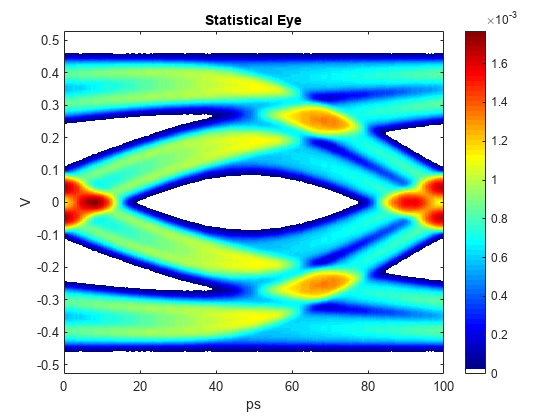pulse2stateye
Statistical eye from pulse response
Syntax
Description
[
calculates and plots the statistical eye S,VH,TH] = pulse2stateye(P,N,M)S from a pulse response
P with N samples per symbol and
M levels of modulation.
The statistical eye is generated by progressively accumulating the histogram of each
vertical slice VH by perturbing the ideal cursor voltage by the
inter-symbol interference (ISI) voltages defined by the pulse response.
The function uses Hula-Hoop algorithm.
Examples
Input Arguments
Output Arguments
Version History
Introduced in R2020a
